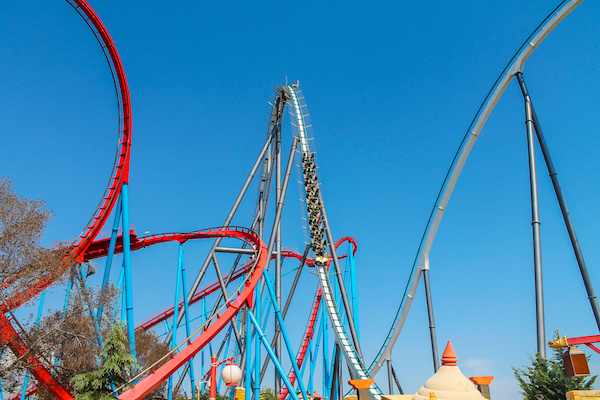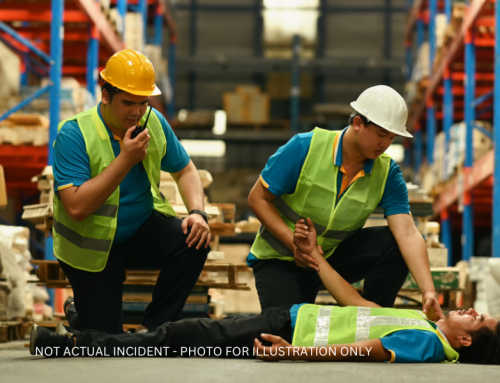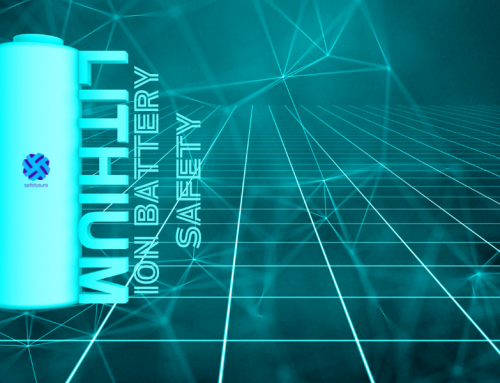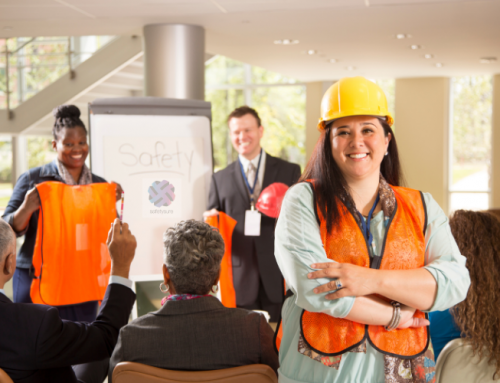With the Queensland Coroner, James McDougall, to hand down his findings on the 2016 Dreamworld tragedy, it may be the right time for Australian businesses to take some safety lessons that can be applied to their own environments. The deaths of four tourists at Dreamworld has been a defining moment in workplace safety in Australia particularly in respect of the need for workplaces to be safe for members of the public. The coronial inquest has drilled down into key issues of organisational culture in respect to safety and has provided us with some great lessons to improve workplace safety.
The inquest into the deaths of Cindy Low, Kate Goodchild, Luke Dorsett, and his partner, Roozi Araghi, on the Thunder River Rapids ride at the Gold Coast theme park was confronting. Not only for many safety professionals across Australia, but for the general public. We all seemingly sat on that ride at one time or another during our lives and placed our trust in the hands of (what we thought) was a prudent operator who seemingly ‘had our backs’ when it comes to our personal safety. Our trust may have been inadvertently blinded by the flashy advertising and the seemingly thin veil of prudence for public safety.
While we would never assume that we have been presented with the evidence heard by the Coroner, and in no way would we ever seek to trivialise the coronial inquest findings, there are some obvious safety lessons at this point that organisation’s across Australia can take heed in 2019.
Safety lesson #1: Poor work safety will eventually damage your brand
Dreamworld’s parent Ardent Leisure and the Dreamworld brand has no doubt been tainted by the tragedy. While the brand remains, the loss of public confidence is evident by the numbers at the Dreamworld park during peak holiday periods. One of our consultants drove passed a few days ago and commented that the bulging carparks at opposition parks contrasted significantly to that of Dreamworld. Public trust appears to have been betrayed and customers are not easily forgiving when it comes to safety. Brand’s need to maintain confidence in both products and services and work safety incidents (large or small) can reflect poorly on brand identity. Sometimes brands do not recover.
Safety lesson #2: Failures can be inherent even in the best of systems
On the 8th October 2018, a Dreamworld maintenance boss conceded there was a “total failure by everybody”at the theme park to identify safety issues on the Thunder River Rapids ride. The inquest was told some ride repairs were delayed for budgetary reasons and Dreamworld’s safety guidelines had warned of the potential for rafts to tip. Dreamworld maintenance planner Grant Naumann agreed the Thunder River Rapids ride was “completely unsafe”.”There were discussions with regards to the cost of a repair or the cost of a replacement and if it was decided that that could be deferred until such a time as it would fit the budget better, yes that happened,” Mr. Naumann responded.
It is important to acknowledge that Dreamworld had a safety system in place and that people had devoted significant time to the system over the years (even outside consultants). People who worked at Dreamworld appeared all too familiar with safety processes and systems but appeared constrained by the overriding budget limitations. Effectively it seems they couldn’t see the wood for the trees and the real risk in damage to the Dreamworld brand if an accident occurred. It appeared that the intangible benefits were not recognised at all levels of the organisation.
Systems are there to be broken and all organisations (large or small) should consider the limitations of their systems in light of the organisational culture at their workplaces. Failure to acknowledge this ultimate can lead to failure.
Safety lesson #3: Just because it’s “safe” today, doesn’t mean it will be SAFE tomorrow
Coroner James McDougall heard of staff not following procedure, of miscommunications between management, and of an external auditor certifying the ride as safe only days before the tragedy. Yes, it was certified ‘safe’ but what were the limitations of that certification and did they really mean anything at all. A workplace is a constantly evolving environment where priorities converge on a regular basis. We understand that people like to have a ‘tick’ to say that their organisation is safe but business owners must recognise that the limitations of an external inspection or audit. They only measure a point in time and measure that point within a range of limitations. An accident can happen the moment an inspector leaves if systems aren’t effective.
The key learning is that safety within an organisation is an evolving beast that changes constantly. Great safety systems recognise this and ensure their approach to managing safety is evolving on a daily basis.
Safety lesson #4: Some things aren’t as difficult to fix as you think
According to the coronial inquest, eight months before the incident, an external company was hired to install $19,000 worth of safety upgrades to the ride. The upgrades did not include a “relatively cheap” water level sensor that, an expert’s report following the incident said, could have prevented the tragedy by automatically stopping the entire ride when the water levels dropped.
Organizations can’t sometimes focus on real issues easily particularly when it comes to engineering priorities. There’s often a lot of nice to do things when it comes to engineering upgrades but ultimately organizations should be focusing energy on the key things that will kill or maim people in our workplaces. Engineers like to make things work and ultimately achieve engineering excellence but, there’s a point of balance when it comes to workplace safety. What engineering controls can you implement that will prevent a tragedy? Most won’t be as costly as you think!
Safety lesson #5: Don’t always rely on the Government to get safety right
The inquest found that many inspectors had visited the Dreamworld workplace over many many years…and yet a tragedy still occurred. We can’t remember how many times we have heard clients say that “the inspector told me to do it that way” only to find that it didn’t meet standards. Workplace health and safety inspectorsaren’t infallible and while they have significant power, they aren’t Gods. Always check applicable standards that are recommended by an inspector and use your common sense. It’s always OK to question and inspectors rationale for their approach.
In the Dreamworld case, significant changes to amusement Workplace Health & Safety occurred after the event and a new code of practice will be introduced in March 2019 that includes mandatory 10 years shut down safety inspections of all rides in theme parks….all occurring after the event. The key issue is that you have the responsibility for your workplace…not the Government. You must use all within your own power to eliminate the hazard through safety lessons.
Finally…
Remember that workplace safety at your workplace is evolving every day. There are many inputs into making a safety program work and every workplace culture can impact that input. The Dreamworld tragedy was a horrific event that should never be repeated but it highlights a number of issues for every business across Australia. We don’t monitor workplace safety in real time, so never assume that what worked today will work tomorrow. Safety evolves and changes. Safety lessons can be learnt.
If you have a question about how Safetysurecan help your business improve safety, talk to one of our team on 1300 087 888 or email us. We’d be more than happy to meet with you to have a no-obligation chat about how we can partner with you to improve your organization’s safety performance.
Read more news from Safetysure.







Leave A Comment